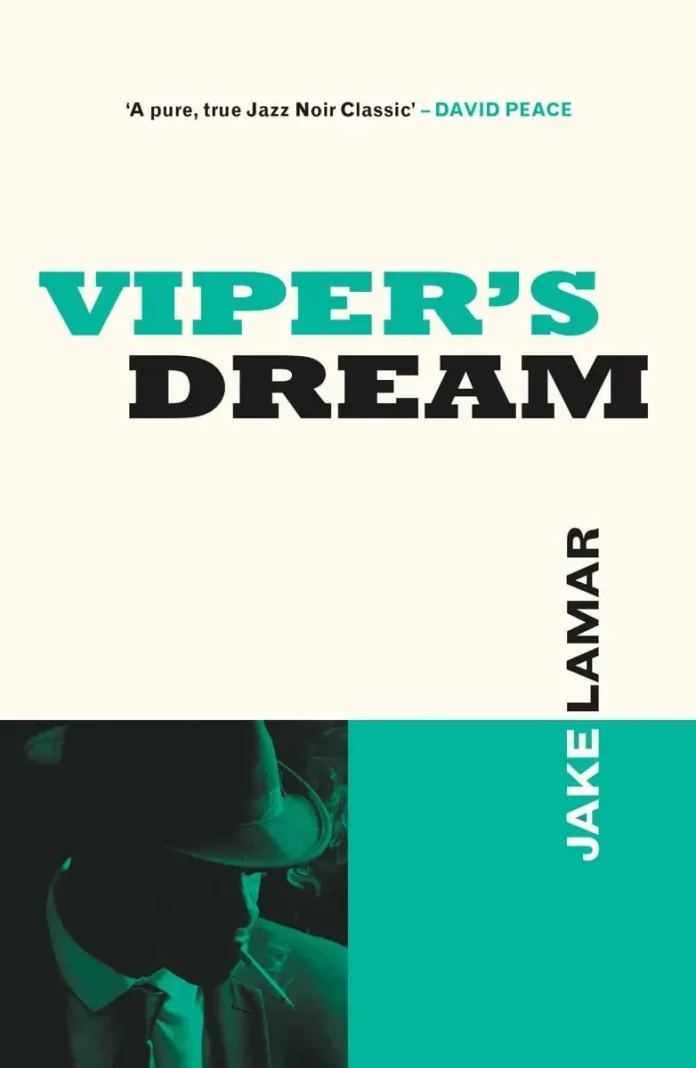In time and geographically, Viper’s Dream ranges from mid-1930s rural Alabama to New York City in the early 1960s. The characters inhabit an often grim world of drugs and violent crime, a world brightened only by the musical culture of the times.
This dark tale centres on Clyde “The Viper” Morton, an unlikely and at first unlikeable protagonist. In 1961 the NYC jazz philanthropist Baroness Pannonica de Koenigswarter, Nica to her friends, asks The Viper: “If you were given three wishes, to be instantly granted, what would they be?” This question prompts The Viper to reflect on the life he has led. Back in 1936 and still a teenager, he abandons friends and family in Alabama and heads for New York in the hope of fulfilling a dream of becoming a jazz musician. Quickly discovering that his love for the music is not complemented by talent, he is instead sucked, not unwillingly, into a culture of crime. Fronting for Abraham Orlinsky, a rich white man known as Mr O, The Viper supplies drugs, mainly to fellow blacks, and as the years roll by he becomes ever more a key figure of this corrupt and violent world.
Based much of the time at Mr O’s club, The Viper is always aware of jazz, which is a subtle background accompaniment throughout the narrative. Although always there, the music is not stylistically constant. The first few years of The Viper’s life in New York are at the height of the swing era, then the bebop revolution, and as the 1960s begin major changes to the music scene are on the way.
This background, composed by the writer with care and understanding, provides a real subtext to the dangerous and sometimes lethal fictional drama that is in the spotlight. As those readers who are also jazz fans will expect, The Viper meets several jazz musicians at Nica’s home, among them Thelonious Monk, who sometimes lived there, and Miles Davis.
Because The Viper’s success at what he does has separated him from ordinary lives, even his closest acquaintances fear him. With none of the people he meets, real and fictitious, can he form a personal bond. This distancing is also psychological and he falsely excuses and justifies all that he does. For example, he rejects heroin because of the inescapable reality of the damage it has wreaked on people like Charlie Parker, who died at the Baroness’s home, but happily distributes marijuana, concurring with the belief of some musicians that its use benefits their playing.
In a way, The Viper is also a user, but in his case it is people that he uses, manipulating them into committing crimes, some of extreme violence, for his benefit. Prompted by Nica’s question, he gradually begins to see his life for what it has been since he left home. Sometimes knowingly, at other times unwittingly, he too has been manipulated. Acting on Mr O’s wishes, he has caused irreparable damage not only to the lives of those he should have protected, but also to his own life.
Although the narrative ends more than 60 years ago, there is nothing dated about the morass of drug addiction, violence, police corruption, racial discrimination and political dishonesty through which The Viper wades. Striving to extricate himself from the quagmire into which he has sunk, he is drawn back inexorably to those he abandoned and begins to understand the harm he has done to their lives. It is with these revelations that The Viper finds unexpected answers to the Baroness’s question, answers that include the uncomfortable truths of his own life. As he learns more about himself and seeks to remedy some of the wrongful acts he has committed, so the reader is steadily drawn to him. Maybe he is still not a likeable character, but he is finally understandable.
As might be apparent, there is little happiness in Viper’s Dream, but the exceptional writing is such that even at its darkest it is a compelling and entertaining tale. It’s strongly recommended to lovers of high-quality crime fiction, especially those who are also jazz fans.
An African-American resident in Paris for three decades, Jake Lamar writes novels and plays and also teaches creative writing at Sciences Po, Paris. In 2019 Viper’s Dream was broadcast in France as a 10-episode radio play. This novel was first published in France in 2021 and is scheduled for publication in the USA in September 2023.
Viper’s Dream, by Jake Lamar. No Exit Press, pb, 192pp, £9.20. ISBN: 978-0-85730-549-7; Ebook, ISBN: 978-0-85730-550-3.
















